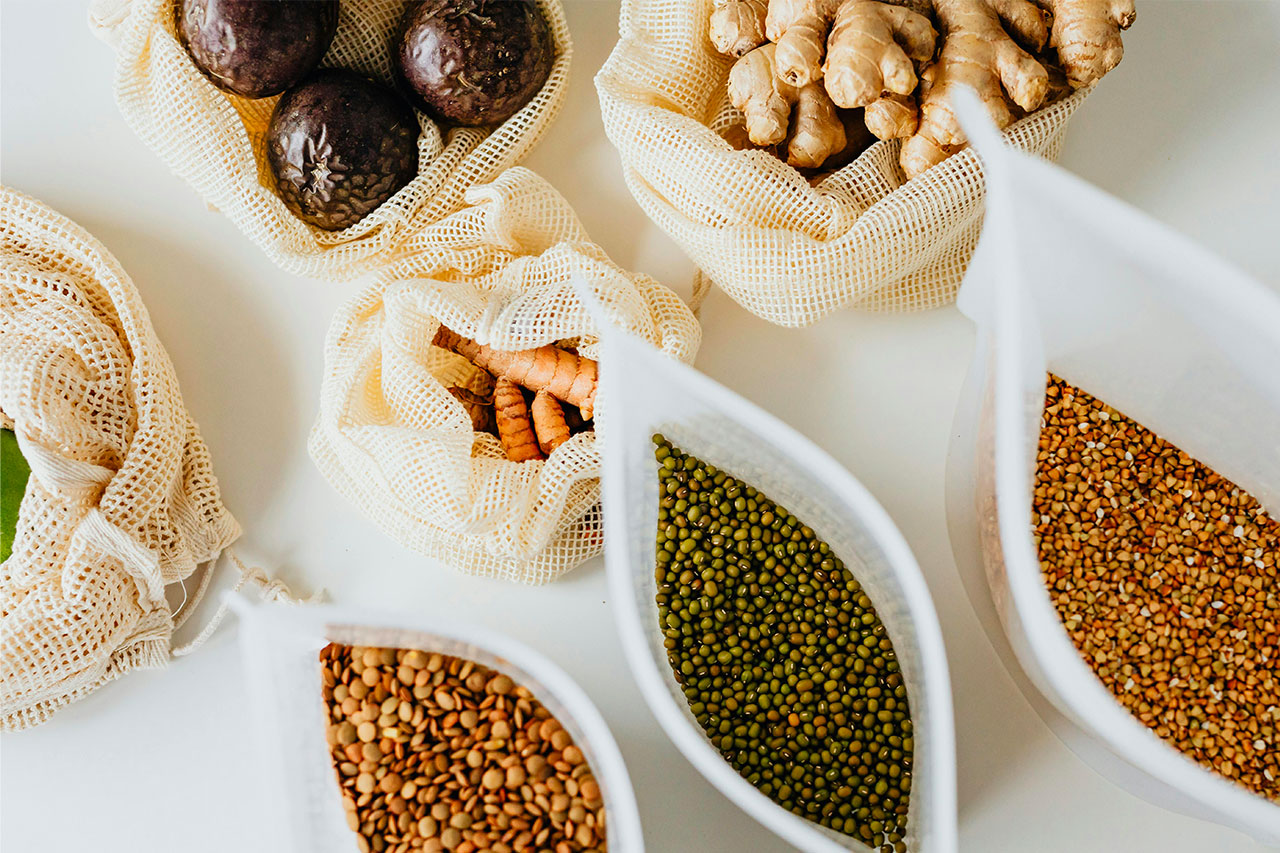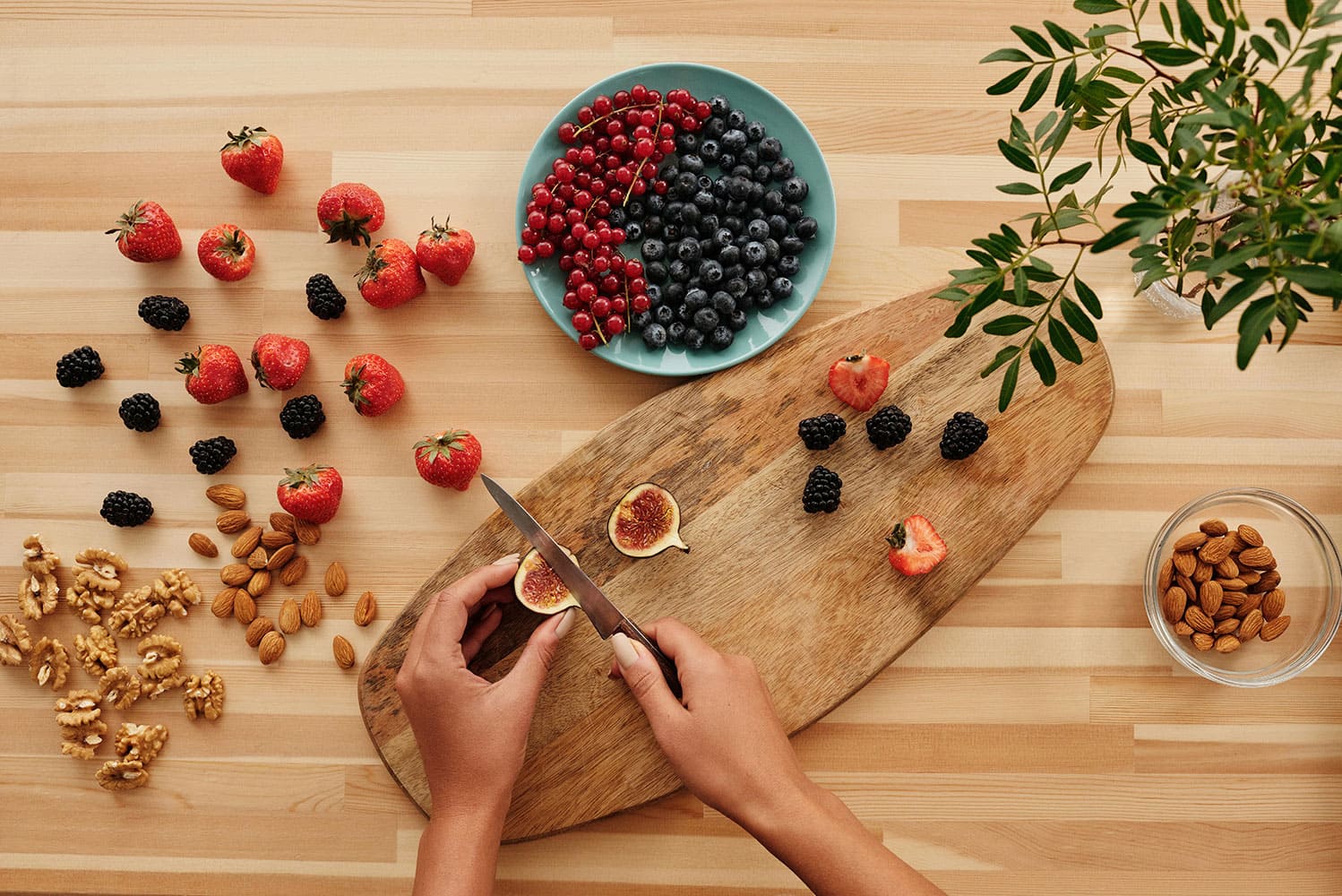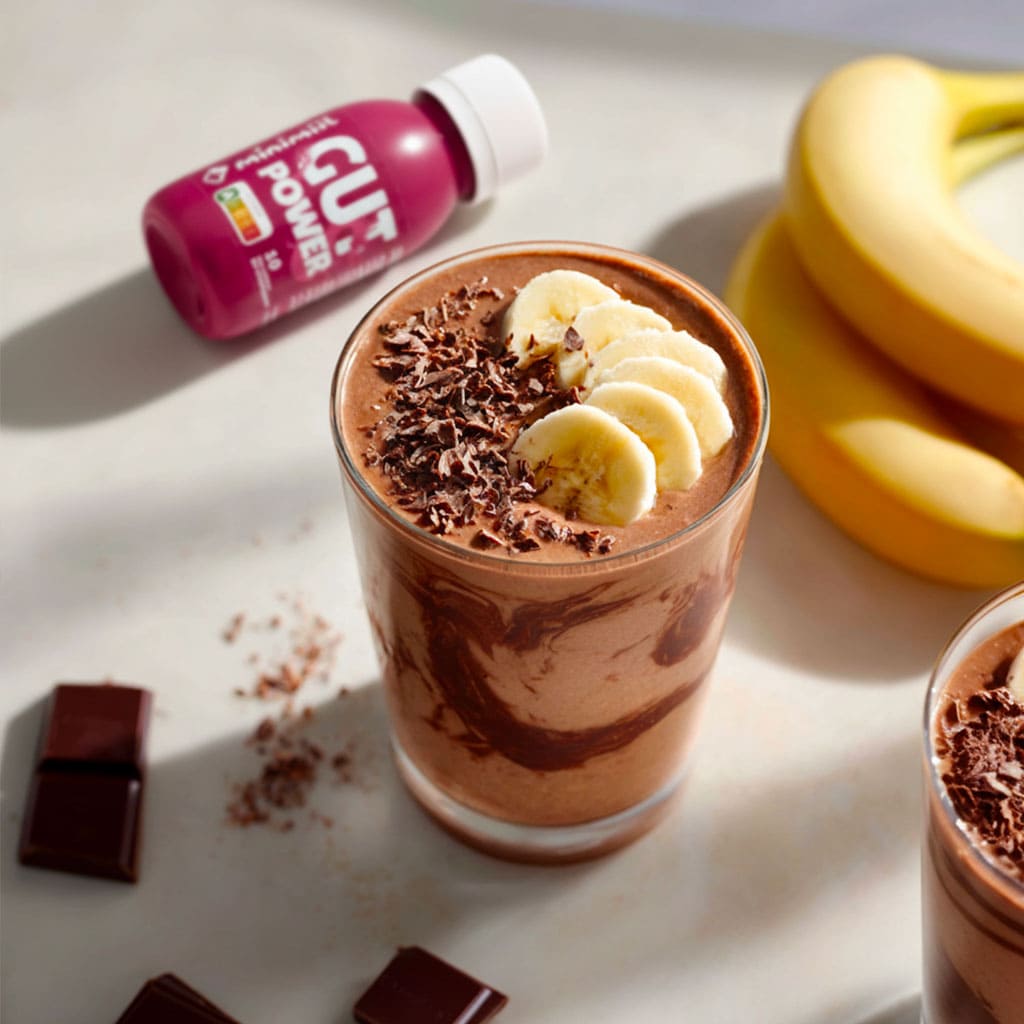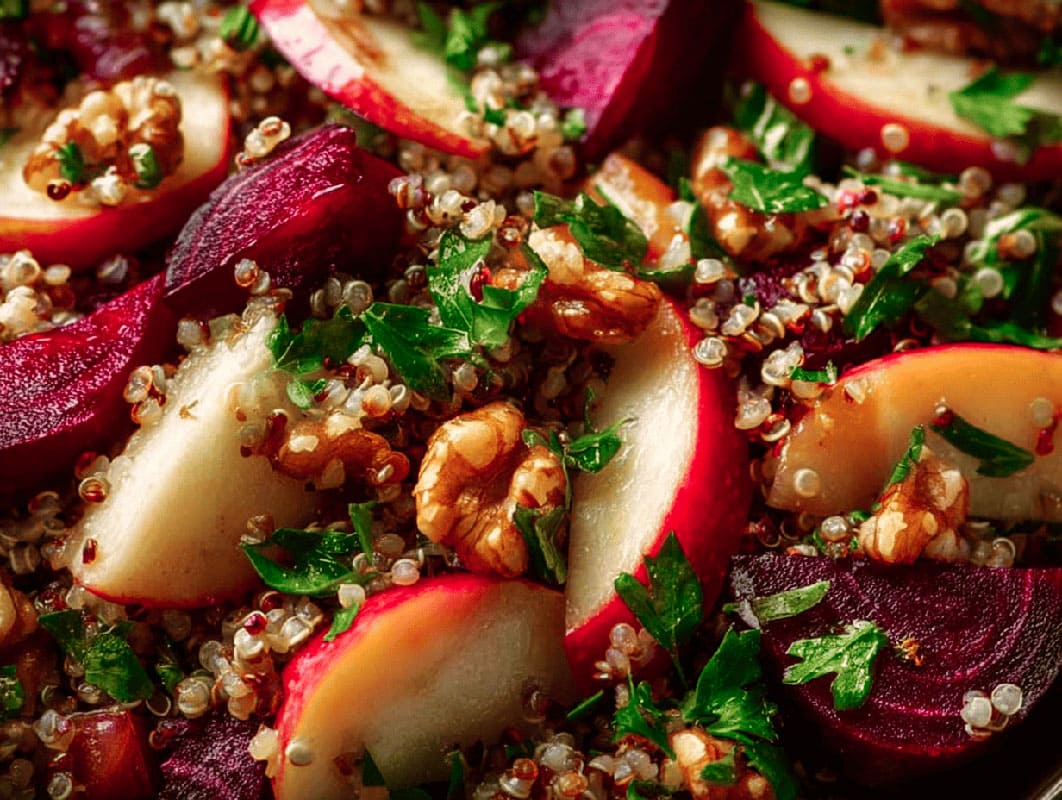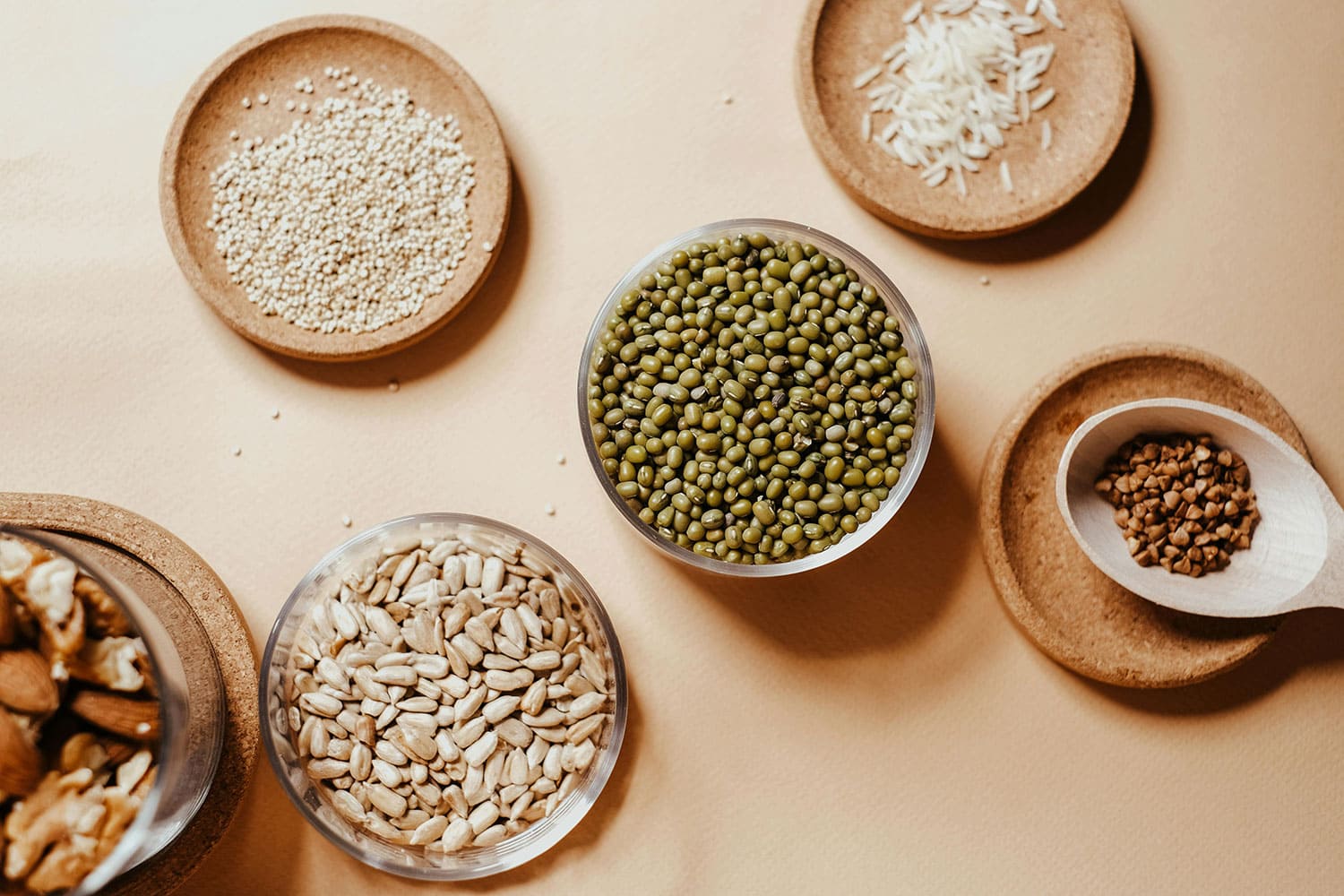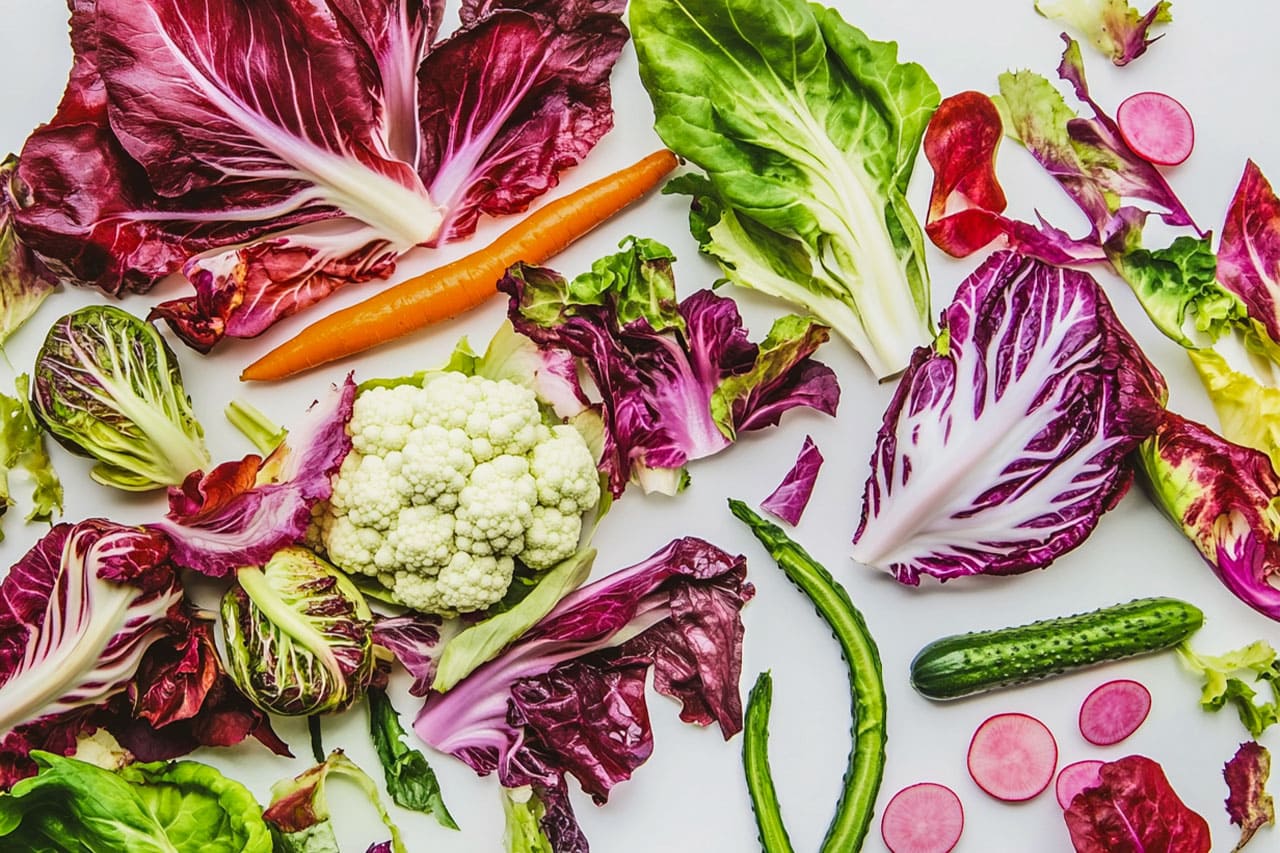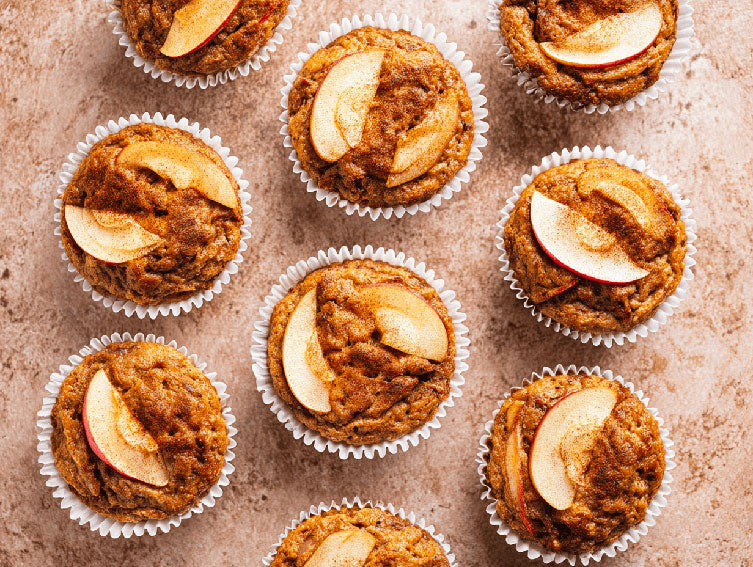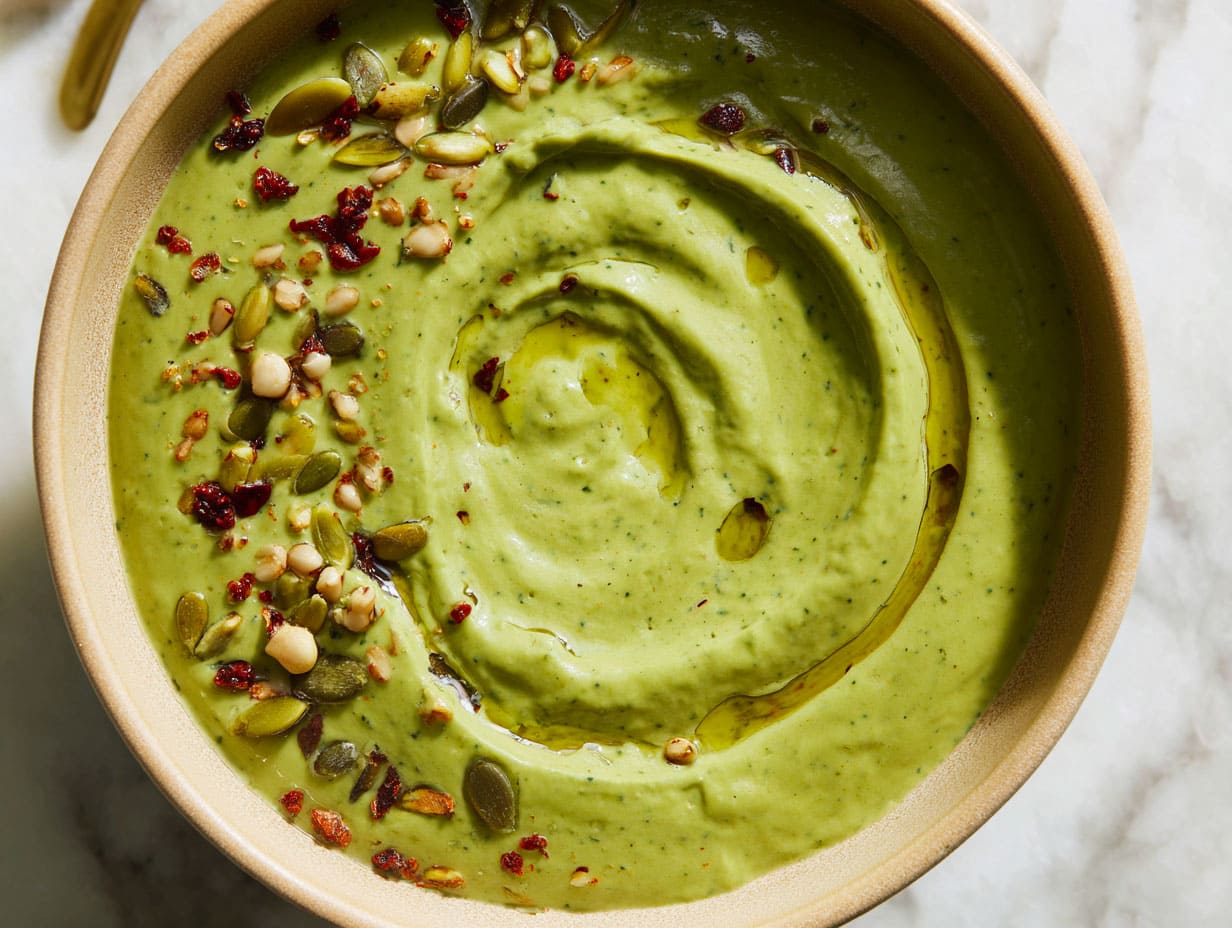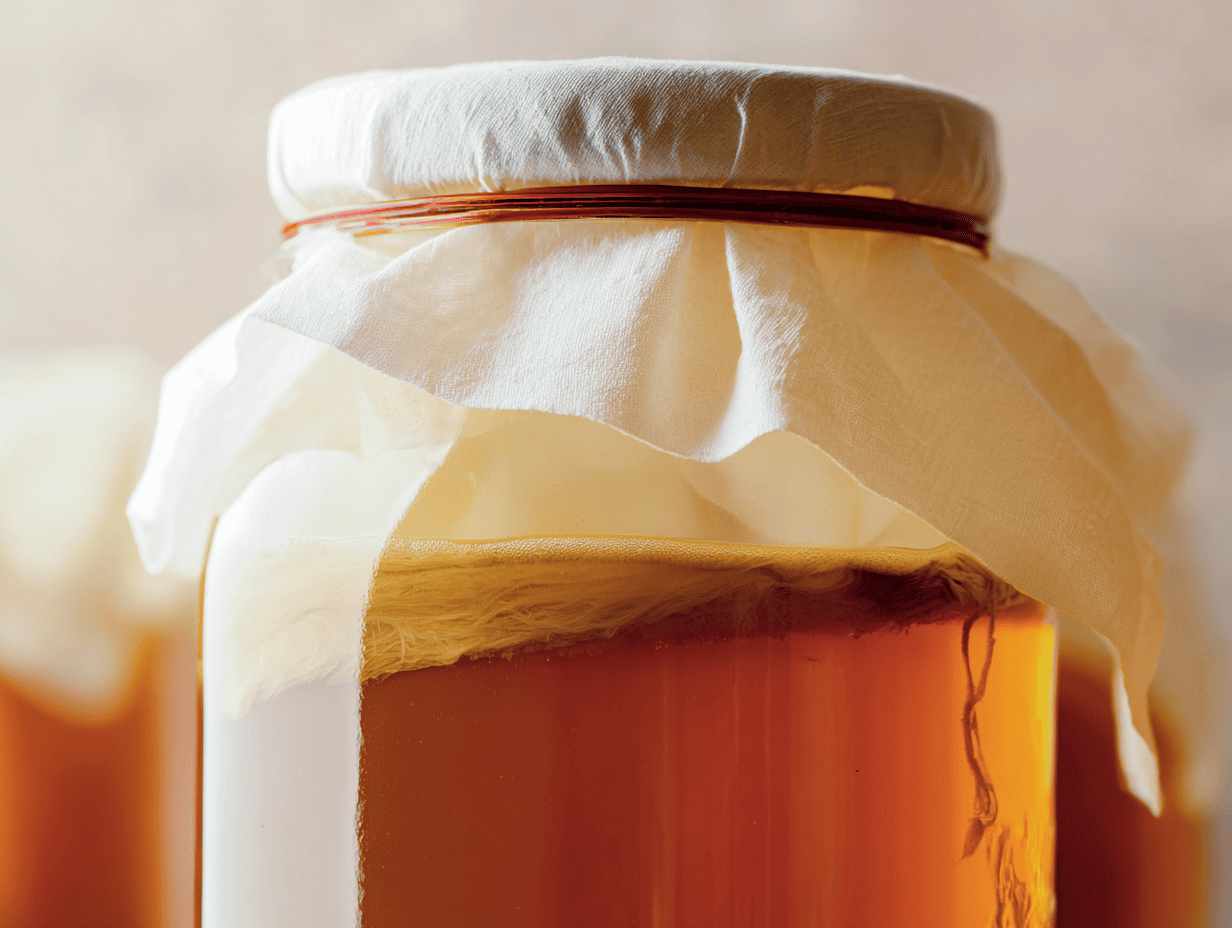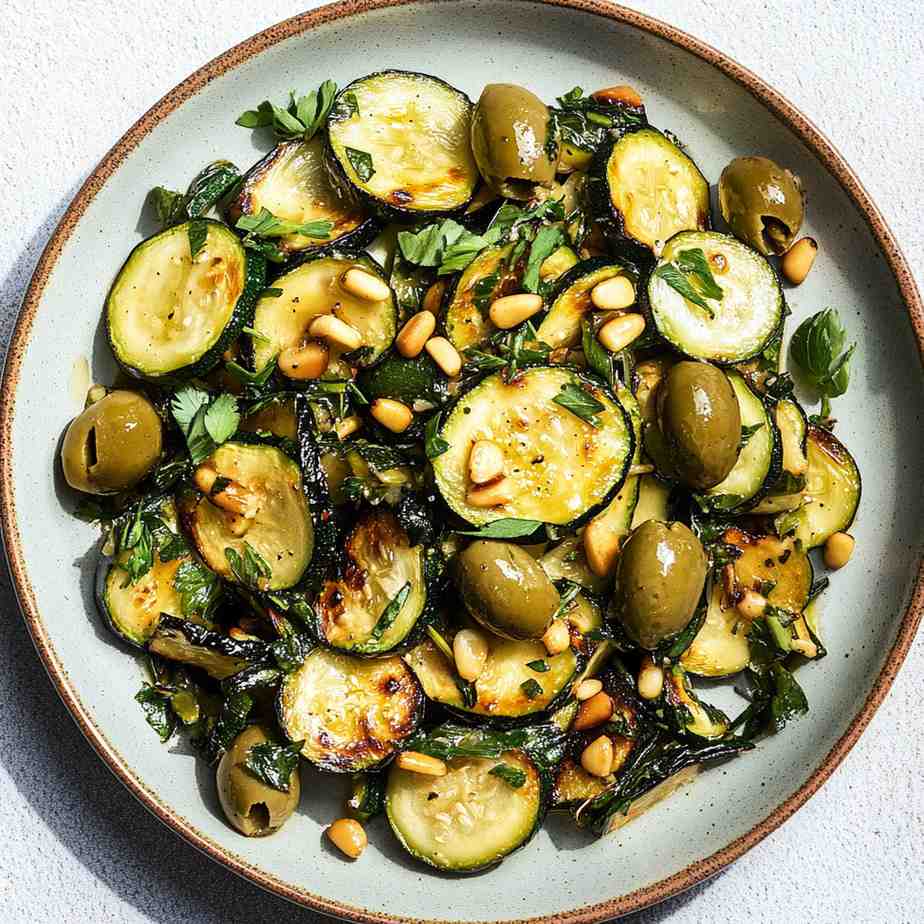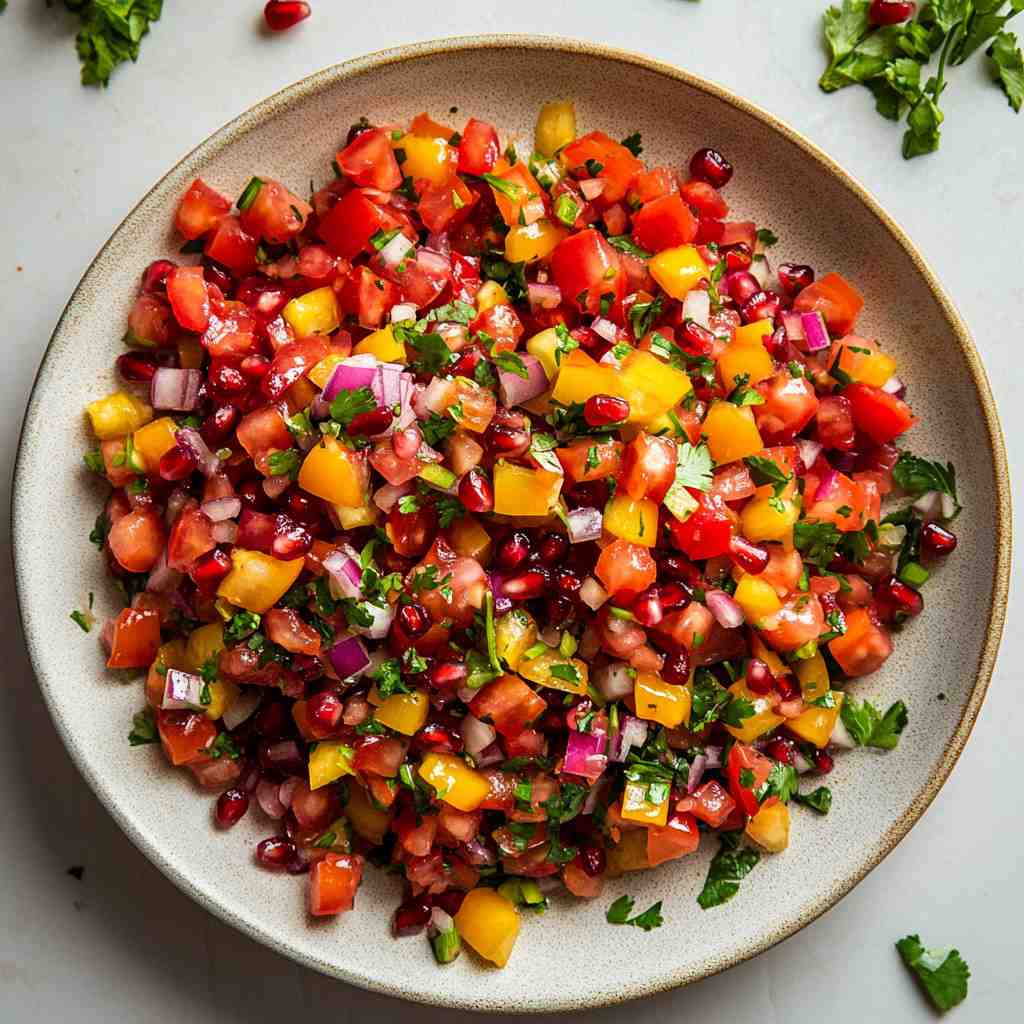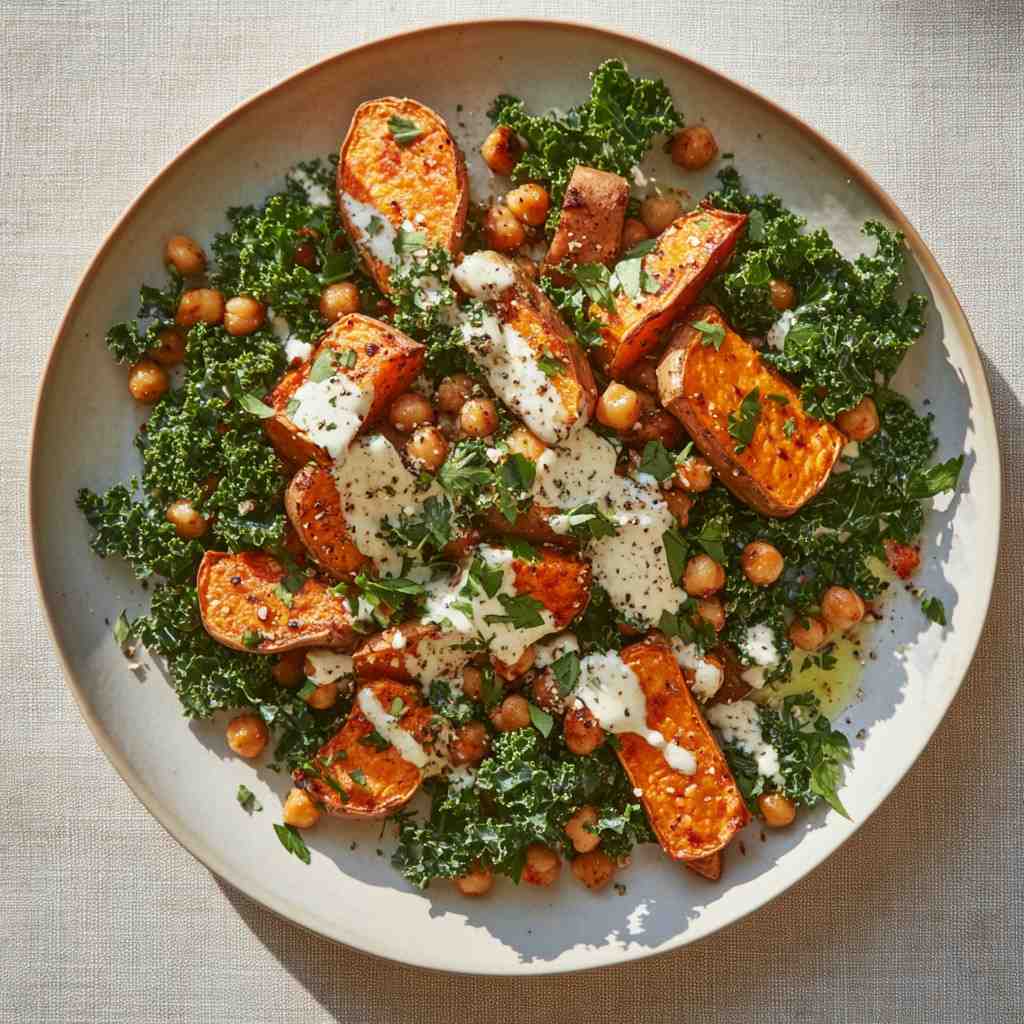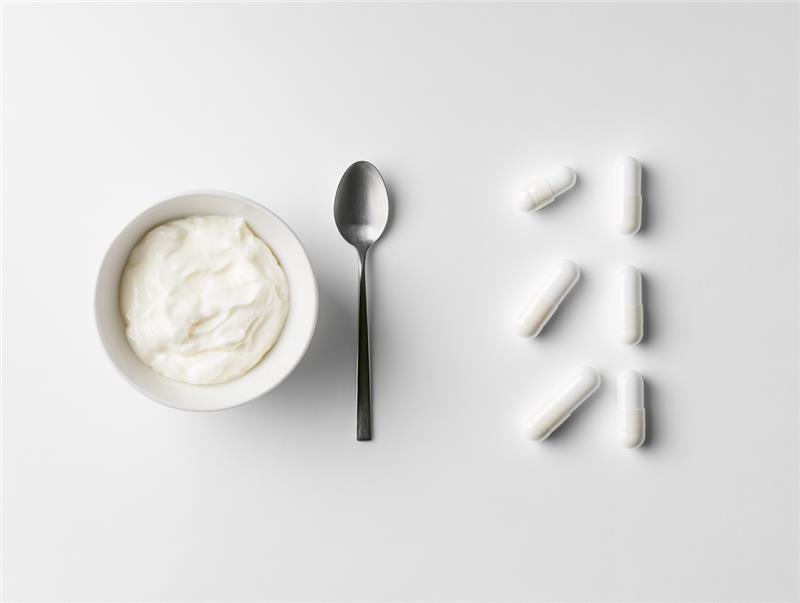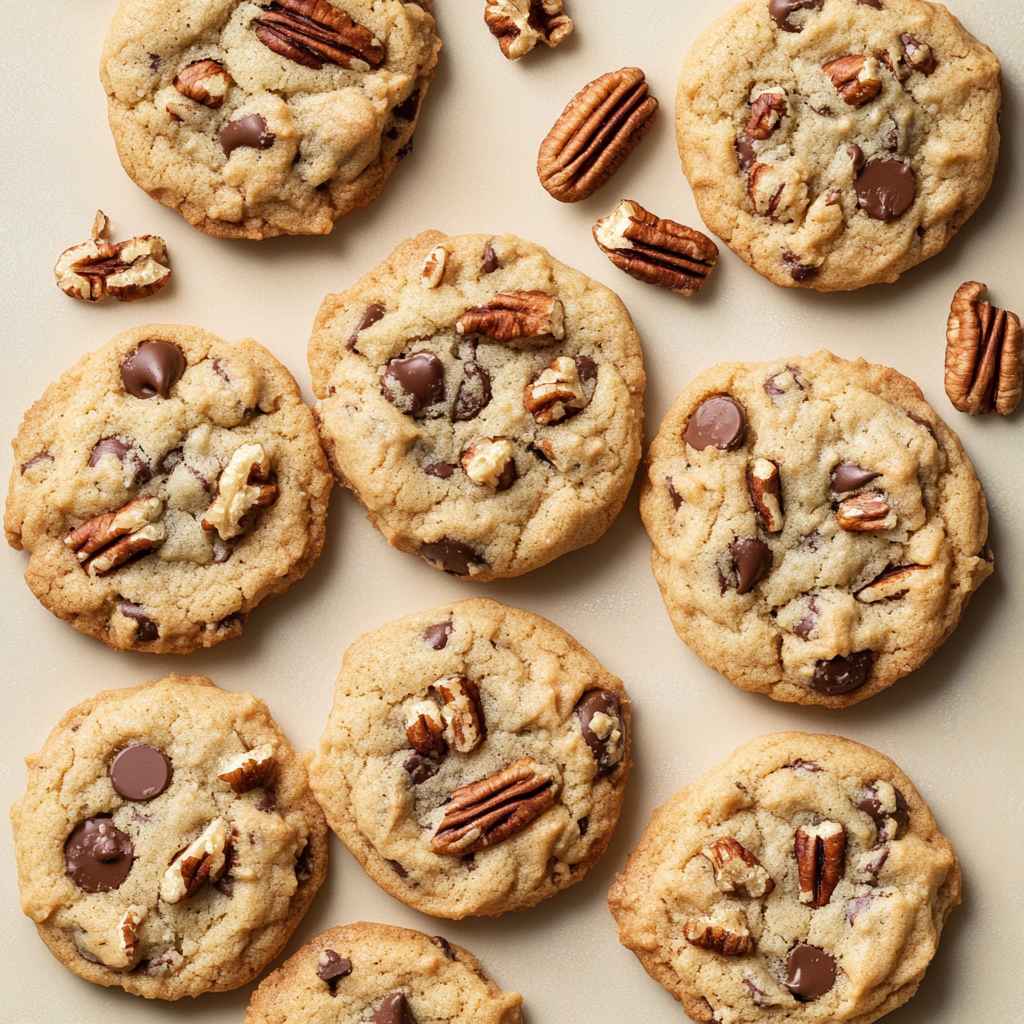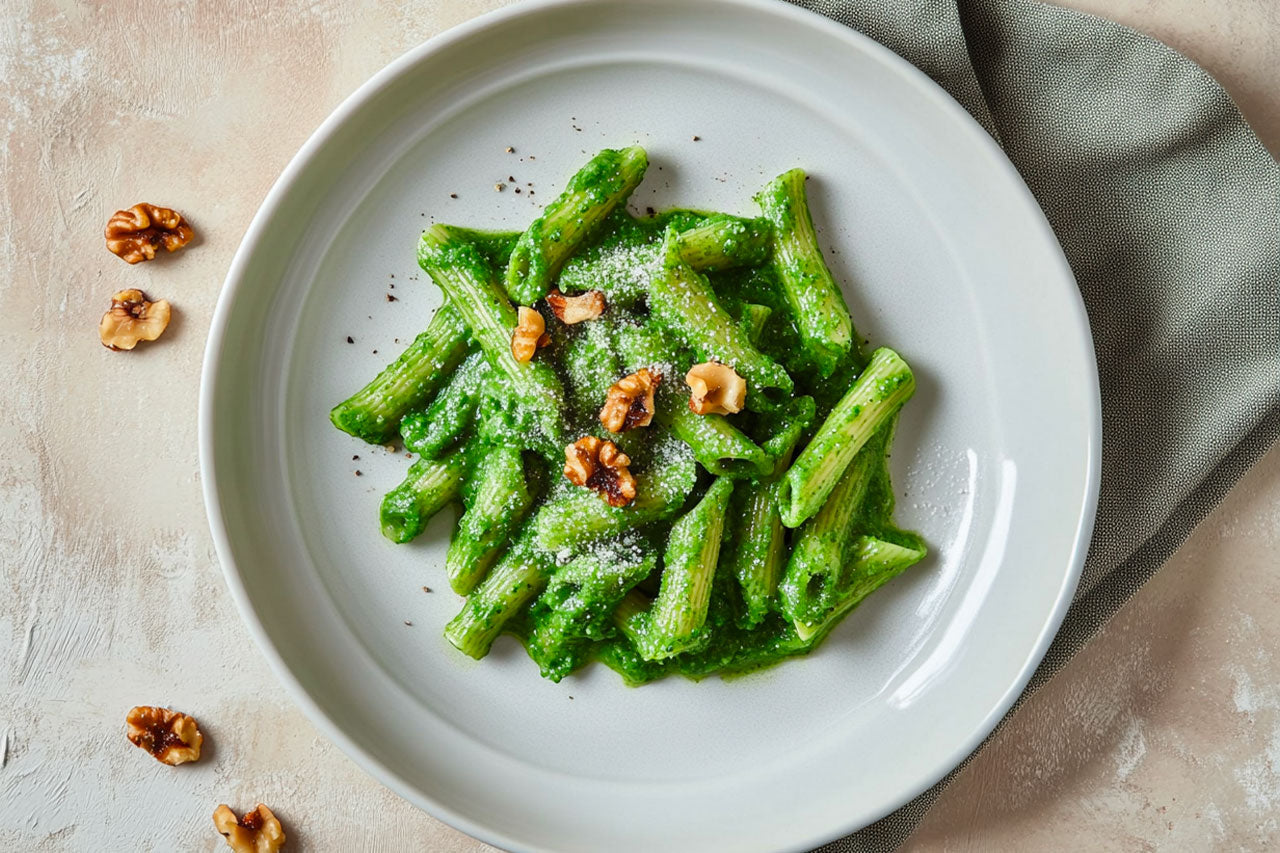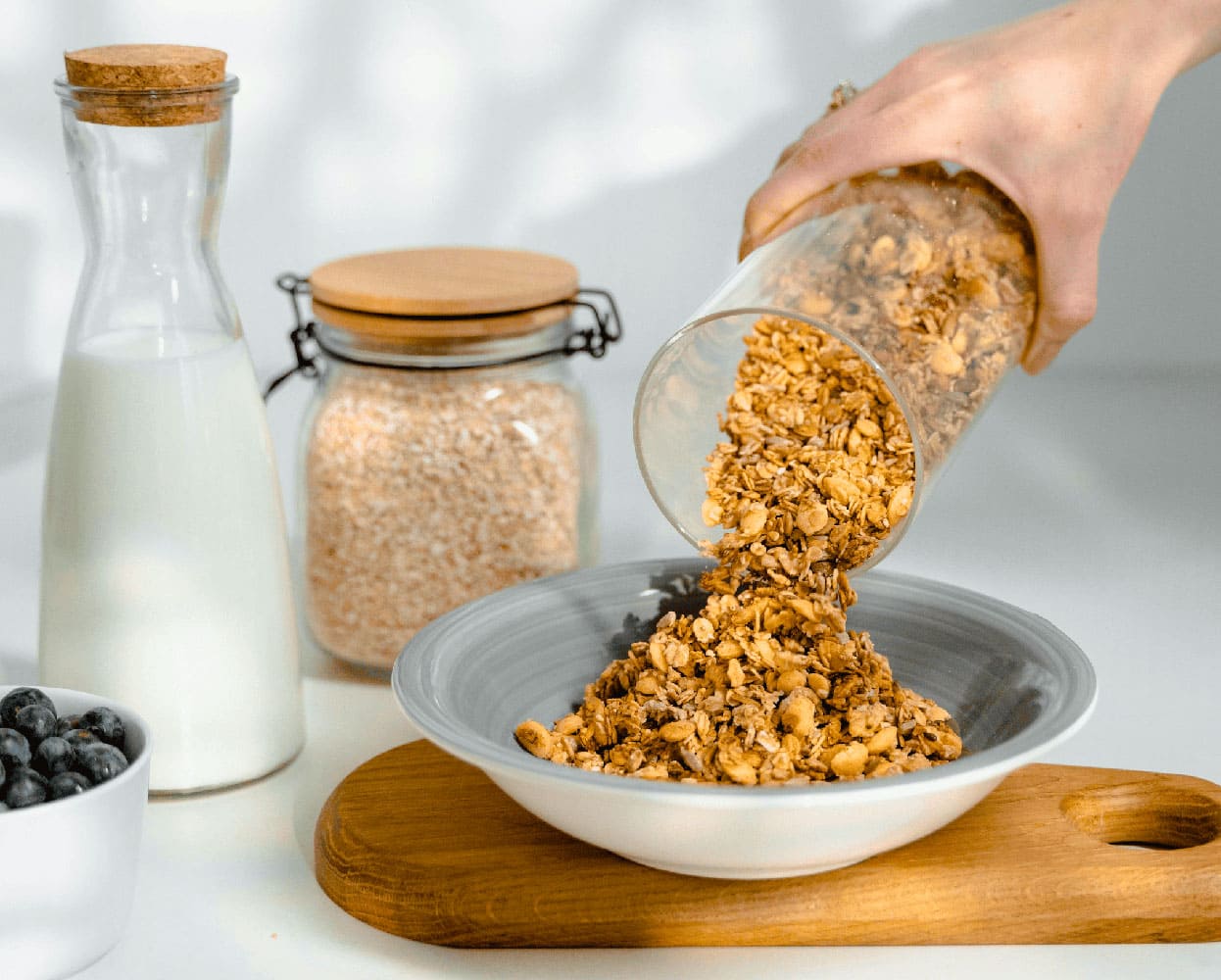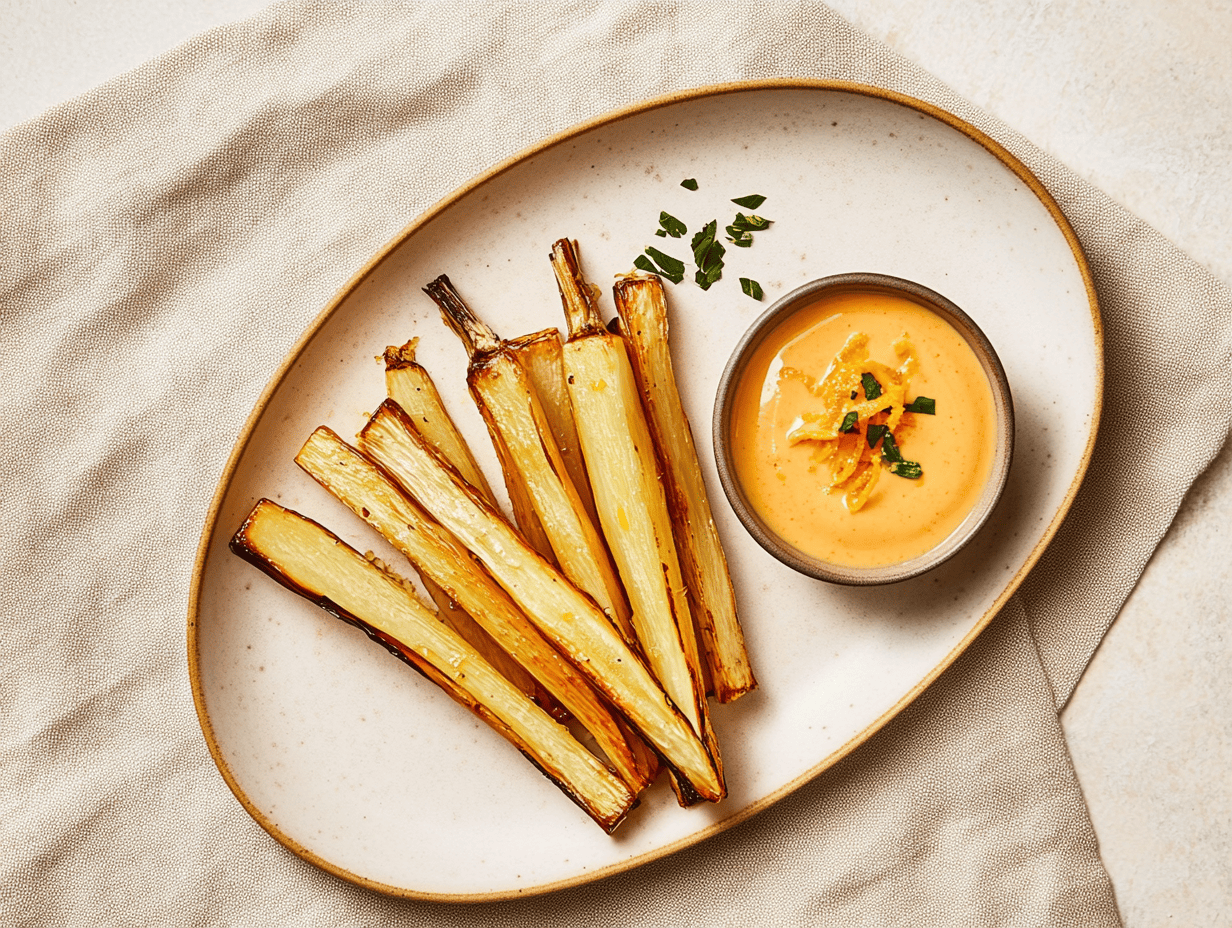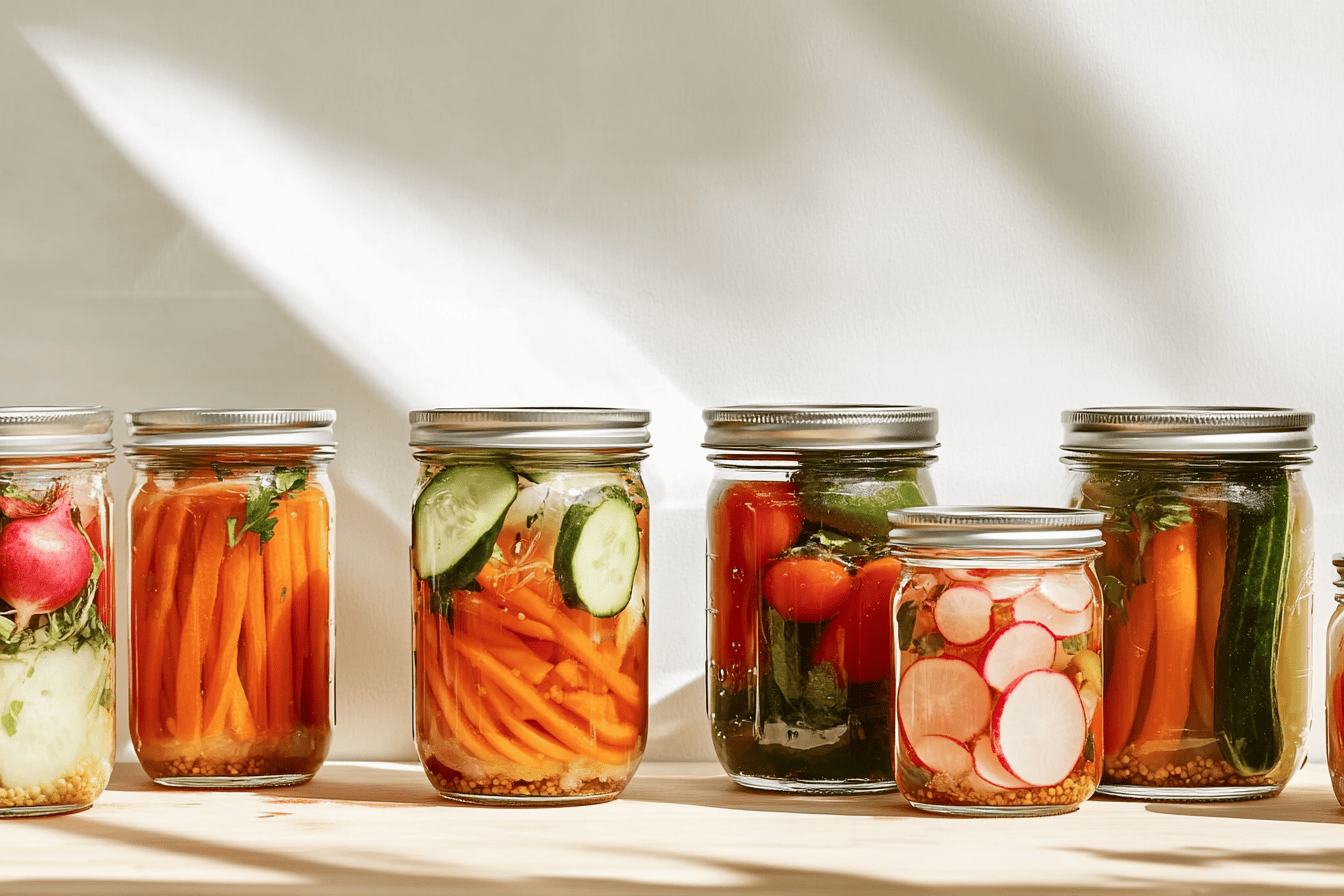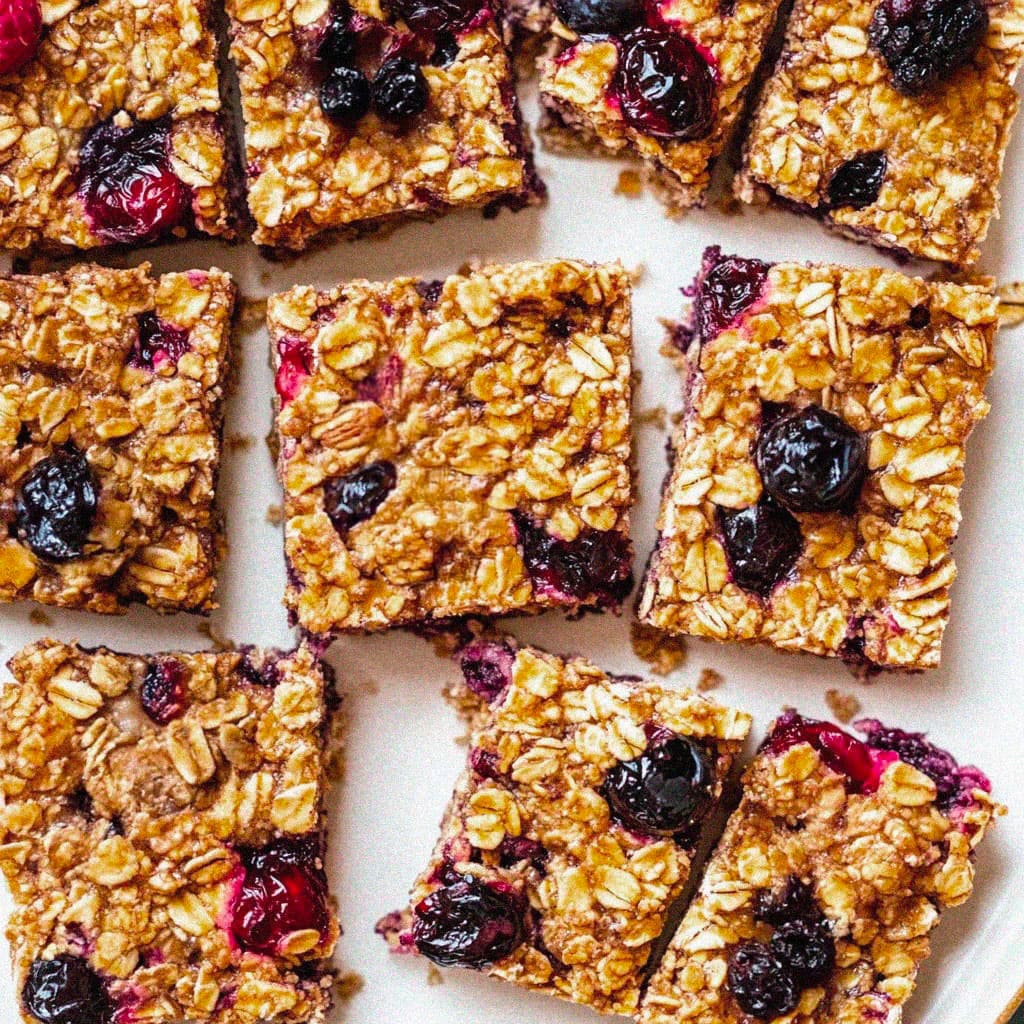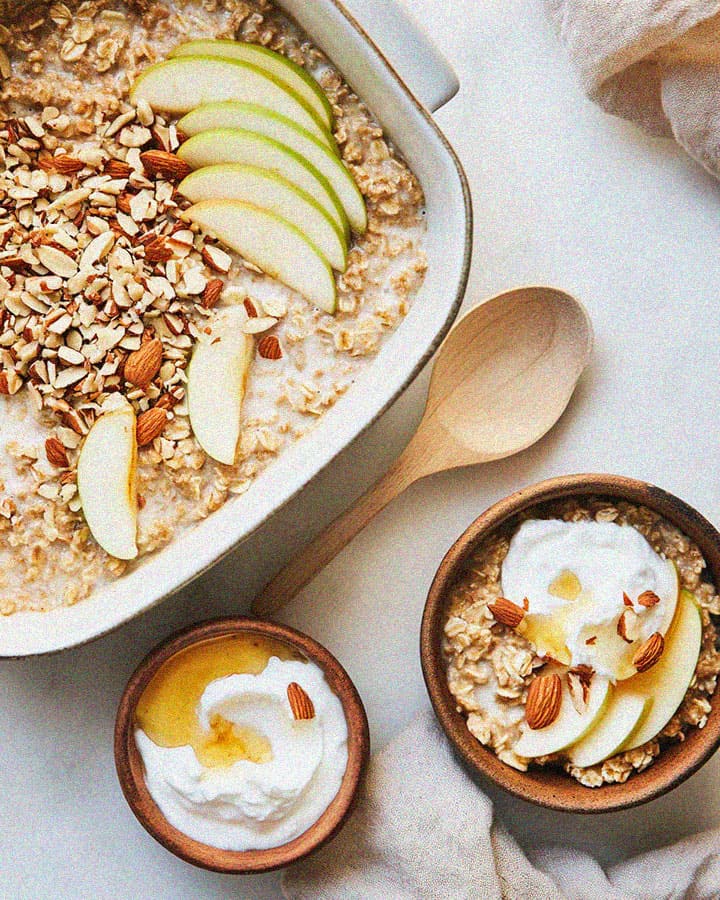What Is Fiber?
Fiber is a type of carbohydrate that your body can’t digest. Though most carbohydrates are broken down into sugar molecules called glucose, fiber passes through the body undigested². Instead of being absorbed, it provides key benefits:
- Keeps digestion regular (prevents constipation & diarrhea)³
- Lowers cholesterol & blood sugar (soluble fiber)⁴
- Feeds good gut bacteria (prebiotics)⁵
- Helps with weight management (keeps you full longer)⁶
Recommended Daily Fiber Intake

Types of Fiber: Soluble vs. Insoluble
1. Soluble Fiber (Dissolves in Water)
Forms a gel-like substance in the intestines, aiding digestion and nutrient absorption⁸.
Key Benefits:
- Lowers cholesterol (binds to bile acids, reducing LDL)⁹
- Stabilizes blood sugar (slows glucose absorption)¹⁰
- Supports gut health (feeds beneficial bacteria)¹¹
- Softens stool (helps with constipation and diarrhea)¹²
Sources of Soluble Fiber:
- Fruits: Apples, oranges, berries
- Vegetables: Carrots, Brussels sprouts
- Legumes: Beans, lentils
- Grains: Oats, barley, psyllium husk
- Seeds: Chia, flaxseeds
2. Insoluble Fiber (Does Not Dissolve in Water)
Adds bulk to stool, speeding up digestion and preventing constipation¹³.
Key Benefits:
- Promotes regularity (prevents constipation)¹⁴
- "Scrubs" the intestines (removes waste and toxins)¹⁵
- May prevent diverticulosis (reduces colon pressure)¹⁶
- Supports weight management (increases fullness)¹⁷
Sources of Insoluble Fiber:
- Whole grains: Brown rice, quinoa, bran
- Vegetables: Celery, cauliflower, potato skins
- Fruits with skins: Apples, pears
- Nuts & seeds: Almonds, sunflower seeds
Dietary fiber comes in many forms, each found in different plants. Rather than fixating on one type for its supposed benefits, aim for variety—all fibers contribute to health in their own way. To meet the daily recommendation of 25-35 grams, include a diverse mix of fruits, vegetables, whole grains, legumes, nuts, and seeds in your diet.
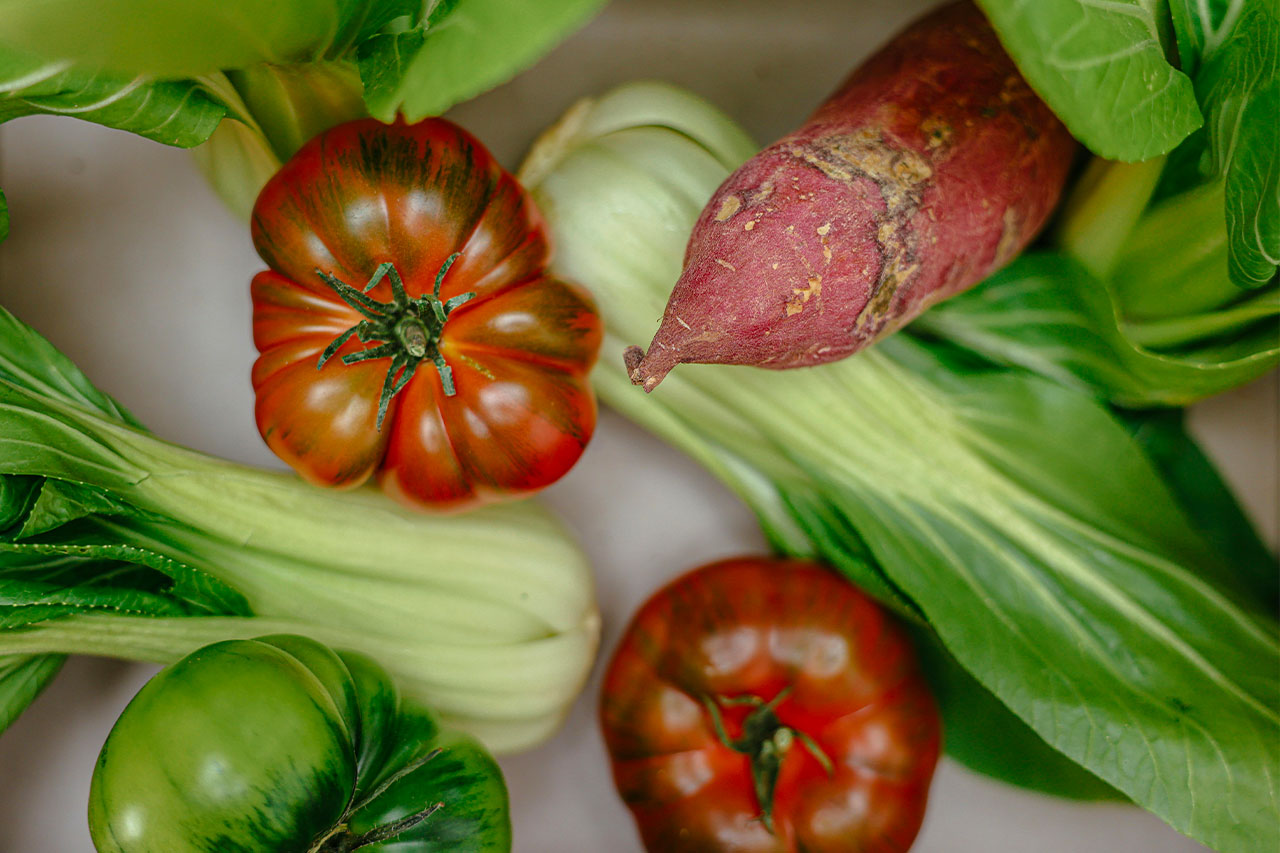
Simple Ways to Boost Fiber Intake
- Choose whole fruits over juice to retain their natural fiber.
- Swap refined grains for whole grains like brown rice, barley, millet, or farro.
- Enhance meals with fiber-rich additions: Stir almonds, chia seeds, or flaxseeds into cereal, or add extra veggies to soups and stir-fries.
- Pick high-fiber breakfast cereals: Look for whole grains as the first ingredient or at least 20% DV for fiber on the label.
- Opt for smarter snacks: Crunch on raw veggies or almonds instead of processed chips.
